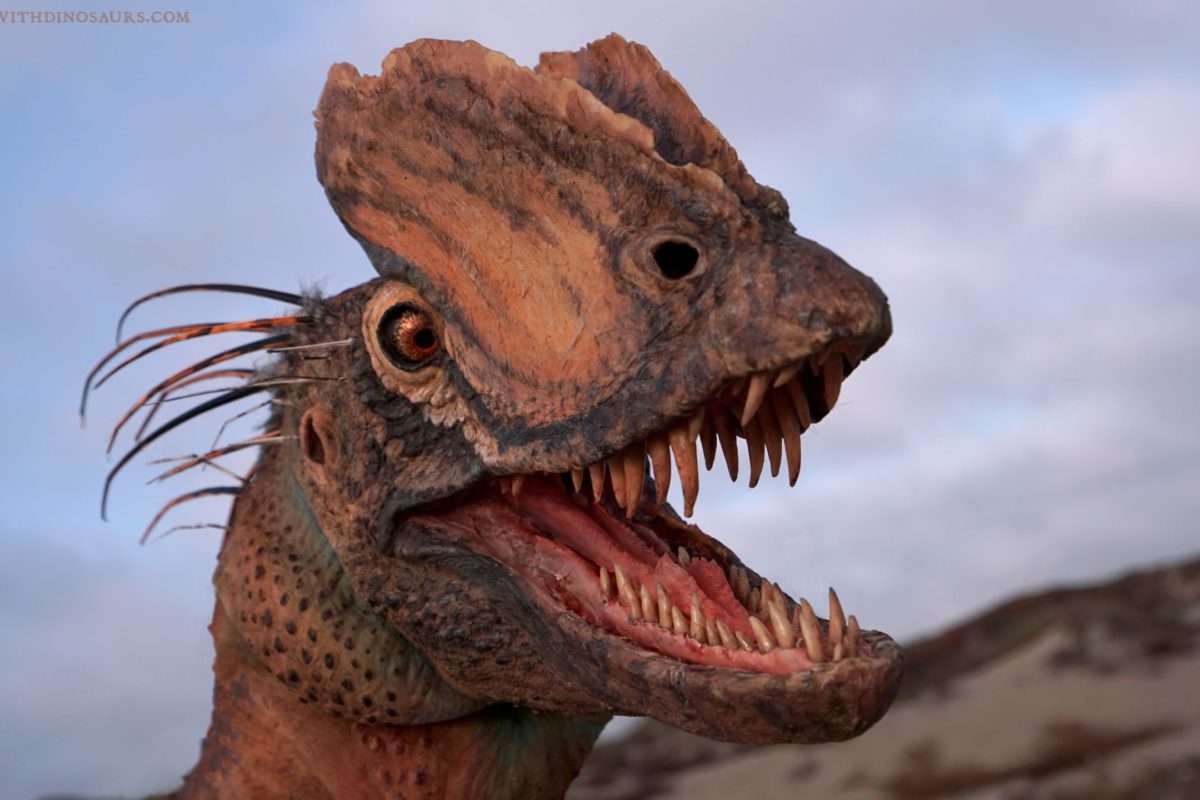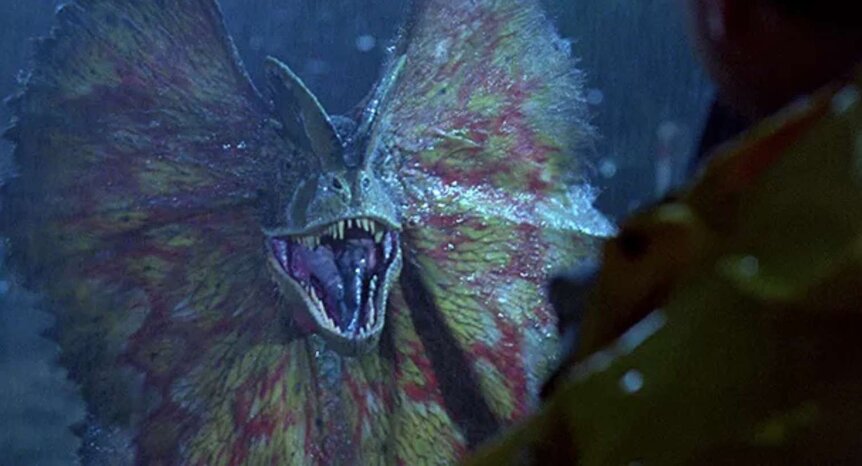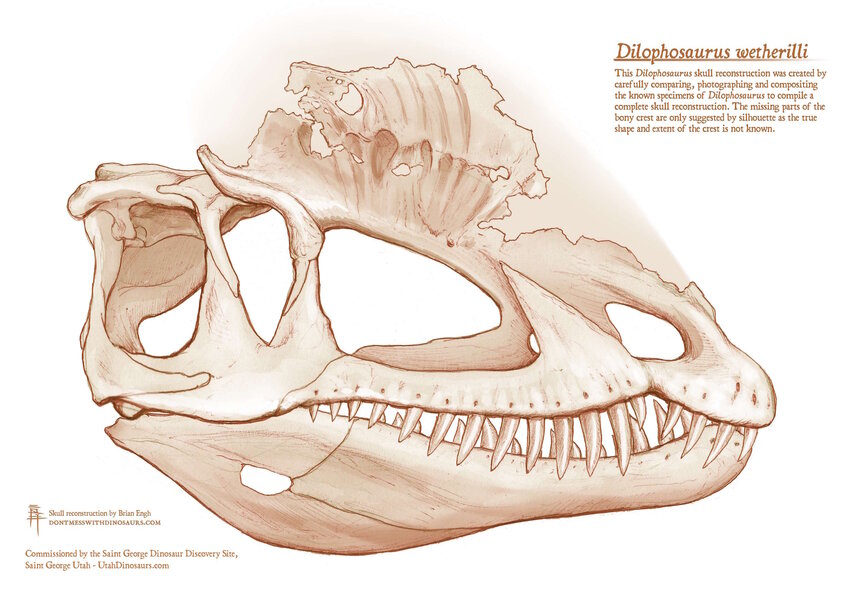Create a free profile to get unlimited access to exclusive videos, sweepstakes, and more!
New study finds Jurassic Park's 'spitter' dino very different than the film's portrayal

One of the more memorable scenes in 1993's Jurassic Park is when the crested, frill-collared Dilophosaurus spits toxic venom at the annoying computer nerd Dennis Nedry as he's trying to get to the dock with stolen embryo samples during a torrential downpour. His fate is sealed as he returns to his disabled Jeep and tries to extricate the vehicle from a mudslide and find himself hosting a prehistoric meal instead.
A new research paper by paleontologists at the University of Texas and published in the Journal of Paleontology is rewriting the official record books about Dilophosaurs by painting them in a very different light than they were portrayed in director Steven Spielberg's iconic blockbuster.
Not knowing much about the striking creature, the source novel's author, Michael Crichton, Stan Winston production designers, and studio screenwriters took several liberties with the way Dilophosaurus was presented, attributes that are now proving to be wildly inaccurate.
Recent findings have revealed that Dilophosaurus was much bigger than it was depicted in the film, often growing to a length of 20 feet, tipping the scale at nearly 700 pounds, and was significantly less lizard-like and more bird-like than the filmmakers and paleontologists initially believed. Estimates now put a fully grown adult as being approximately half the size of an average Tyrannosaurus Rex. It existed roughly 183 million years ago, during the Early Jurassic period.
“It’s pretty much the best, worst-known dinosaur,” lead study author Adam Marsh explained in a press statement. “Until this study, nobody knew what Dilophosaurus looked like or how it evolved. Dilophosaurus is clearly built for being a big macropredator. It’s a large-bodied animal that was built for eating other animals.”
Past descriptions of the creature were highlighted by its thin bony skull crest, a vibrating neck collar that flared when angry or provoked, a weak underdeveloped jaw, and the ability to eject a paralyzing goo for defensive tactics or to take down prey. But contrary to those erroneous fictionalized portrayals, Marsh and his crew found that Dilophosaurus possessed a powerful set of jaws, and a skeletal system fortified with air pockets similar to the structure of modern birds.
It was back in 1940 when the first fossilized remains of Dilophosaurus were unearthed on Navajo Nation Land near Tuba City, Arizona, specimens that Marsh examined to create a clearer account of the beast's behavior and physical appearance.
By employing an algorithm to compare and contrast an assortment of available remains with the initial fossil, Marsh was able not only to confirm they were Dilophosaurus, but also to expose a great evolutionary gap to infer that there might be undiscovered cousins somewhere still buried.
Early research papers going back to 1954 allowed for a muddled snapshot of the dinosaur's description at best.
For their revealing research, Marsh and his team were able to inspect well-known Dilophosaurus specimens belonging to the Kayenta Formation in Arizona and owned by the Navajo Nation. The University of California Museum of Paleontology contains three of the skeletons, while The Jackson School Museum of Earth History houses the pair discovered by study co-author Timothy Rowe.
“One of the most important responsibilities of our museum is curation,” said Matthew Brown, director of the Vertebrate Paleontology Collections. “We are very excited to help share these iconic Navajo Nation fossils with the world through research and educational outreach, as well as preserve them for future generations.”





























